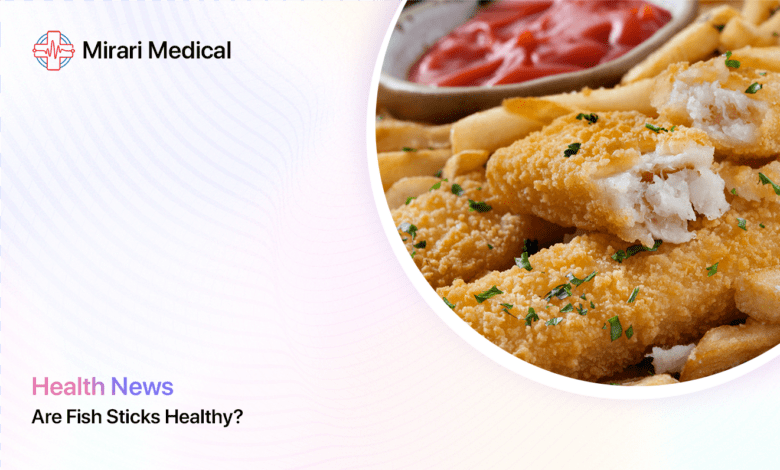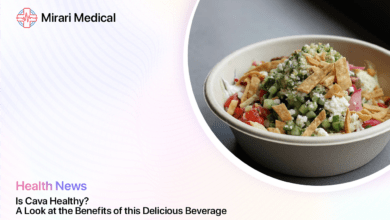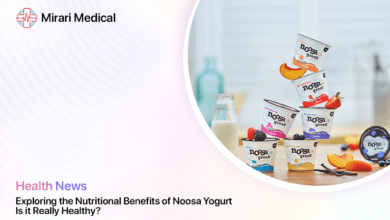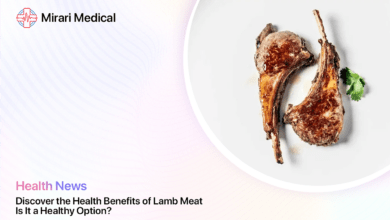Are Fish Sticks Healthy?

You may be interested
Fish sticks are a convenience food that many keep in their freezers for a quick meal option. However, the question often arises: “Are fish sticks healthy?” In this comprehensive article, we will explore the nutritional content of fish sticks, potential health benefits, and concerns. We’ll also compare them to other fish preparations, and provide tips for healthier consumption. So, let’s dive in!
Overview of Fish Sticks
Definition and Composition
Fish sticks, also known as fish fingers, are a popular food item made by coating white fish fillets, such as cod, pollock, or haddock, in breadcrumbs or batter. These fillets are then either baked or deep-fried to create a crispy exterior. The appeal of fish sticks lies in their convenience and versatility they can be quickly cooked and paired with various sides, making them a go-to meal for families worldwide.
Popular Brands and Varieties
Several brands have established themselves as household names in the fish stick market:
- Gorton’s: Known for their classic Crunchy Breaded Fish Sticks, Gorton’s offers a juicy fish center enveloped in a crisp breading that has been a favorite for years.
- Mrs. Paul’s: Mrs. Paul’s Crunchy Breaded Fish Sticks are cherished for their nostalgic flavor and affordability.
- Trident Seafoods: Their Ultimate Fish Stick is made with wild-caught Alaska pollock, praised for its flavor and commitment to sustainability.
- 365 by Whole Foods Market: This brand provides a savory breaded fish stick option, celebrated for its taste and value.
- Fremont Fish Market (Aldi): Offering a cost-effective choice, though reviews on quality have been mixed.
- Dr. Praeger’s: Known for their healthier alternatives, Lightly Breaded Fish Sticks are crafted with a good fish-to-breading ratio.
- Ian’s: Specializing in gluten-free options, although some consumers find the texture less appealing.
Each brand has its distinctive offerings, catering to different tastes, dietary needs, and budgets.
Nutritional Profile of Fish Sticks
Protein Content
Fish sticks provide a decent amount of protein, essential for muscle maintenance and overall health. For example, a serving of Gorton’s fish sticks typically contains around 12 grams of protein.
|
Brand |
Protein per Serving |
| Gorton’s | 12 grams |
| Mrs. Paul’s | 10 grams |
| Trident Seafoods | 11 grams |
Protein is vital for cell repair and muscle growth, making fish sticks a convenient protein source.
Fat Content
Fried fish sticks are more likely to be higher in fat compared to baked ones. The fat content primarily includes both saturated and unsaturated fats, with some trans fats potentially introduced during frying. Consumption of high trans fats can increase the risk of cardiovascular disease.
|
Preparation Method |
Fat per 100g |
| Fried | 15 grams |
| Baked | 8 grams |
Carbohydrate Content
The breading of fish sticks contributes significantly to their carbohydrate content. This can be a concern for those monitoring their carb intake. Baked versions typically have fewer carbohydrates than fried ones due to the lack of additional batter.
Vitamin and Mineral Content
Fish sticks can be a source of essential vitamins and minerals, although the amount can vary based on the brand and preparation:
- Vitamin D: Important for bone health.
- Vitamin B12: Vital for nerve function and red blood cell formation.
- Magnesium: Supports muscle and nerve function, and energy production.
- Iron: Crucial for transporting oxygen in the blood.
While fish sticks offer these nutrients, fresh fish often provides them in greater quantities.
Health Benefits of Fish Sticks
Source of Omega-3 Fatty Acids
Fish sticks, particularly those made from oily fish like pollock, can be a good source of omega-3 fatty acids. Omega-3s are known for their heart health benefits and anti-inflammatory properties:
- Reduced Risk of Heart Disease: Omega-3 fatty acids help prevent arrhythmias and improve cholesterol levels.
- Brain Health: DHA, a type of omega-3, is crucial for brain development and cognitive function.
Protein for Muscle Health
The protein content in fish sticks aids muscle repair and growth. Protein is also essential for maintaining muscle mass, particularly important as people age.
Vitamin D for Bone Health
Vitamin D, found in fish sticks, is critical for calcium absorption and bone health. Adequate vitamin D levels help prevent conditions like osteoporosis and rickets.
Potential Health Concerns
Sodium Content
Fish sticks can be high in sodium, which poses risks for people managing blood pressure. Excessive sodium intake is linked to hypertension and heart disease.
| Brand | Sodium per Serving |
| Gorton’s | 400 mg |
| Mrs. Paul’s | 370 mg |
Monitoring sodium intake is crucial to mitigate related health risks.
Trans Fat from Frying
Trans fats from the frying process are a concern. Although less common in homemade recipes and baked versions, commercial fried fish sticks may contain trans fats, which are linked to higher LDL cholesterol levels and increased heart disease risk.
Mercury Levels in Fish
Mercury contamination is a concern with fish consumption. However, fish sticks typically use fish species like pollock and haddock, which are low in mercury.
Comparison to Other Fish Preparations
Baked vs Fried Fish Sticks
Baked fish sticks are generally healthier due to lower fat content and fewer calories compared to their fried counterparts. The baking process also preserves more nutrients.
Pros and Cons:
- Baked:
- Lower in fat and calories
- Retains more nutrients
- Fried:
- Higher in fat and calories
- Might be more palatable for some due to the crispy texture
Fish Sticks vs Fresh Fish
When comparing fish sticks to fresh fish, fresh fish often comes out on top due to its pure nutrient profile:
| Type | Protein per 100g | Fat per 100g | Omega-3 Content |
| Fresh Cod | 19 grams | 1 gram | High |
| Fish Sticks | 12 grams | 8 grams | Moderate |
Fresh fish, particularly when baked or grilled, offers more intact nutrients and fewer additives than processed fish sticks.
Fish Sticks During Pregnancy
Safety Considerations
Pregnant women need to be cautious with fish consumption due to potential mercury content. Fish sticks, due to the species used, are generally lower in mercury, making them a safer option compared to high-mercury fish like swordfish or king mackerel.
Recommended Intake During Pregnancy
- 2-3 servings per week: This ensures sufficient intake of omega-3 fatty acids and other nutrients without excessive mercury exposure.
- Avoidance of high-mercury fish: Sticking to fish sticks made from low-mercury species like pollock is advisable.
Fish Sticks for Weight Management
Calorie Content
Fish sticks can fit into a balanced diet, but portion control is essential due to their calorie content:
| Serving Size | Calorie Count |
| 3-4 Fish Sticks | Approx. 200-250 kcal |
Incorporating fish sticks occasionally, accompanied by vegetables or a salad, can provide a nutrient-rich, lower-calorie meal option.
Protein for Satiety
Protein in fish sticks helps in feeling fuller for longer, aiding in weight management. Consuming protein-rich foods can prevent overeating by promoting satiety.
Tips for Healthier Fish Stick Consumption
Choosing Higher Quality Brands
Opting for brands using whole fish fillets rather than minced fish can improve the nutritional profile. Brands like Trident Seafoods and 365 by Whole Foods Market offer better quality options.
Preparation Methods
Baking or air-frying fish sticks instead of deep-frying can significantly reduce fat and calorie content. Additionally, using herbs and spices instead of heavy sauces can enhance flavor healthily.
Portion Control
To avoid excessive calorie and sodium intake, monitor portions and complement fish sticks with nutrient-dense sides like vegetables or whole grains.
Alternatives to Fish Sticks
Other Seafood Options
- Grilled Fish Fillets: A healthier option providing intact nutrients.
- Shrimp: High in protein and low in fat.
- Canned Tuna or Salmon: Convenient and nutrient-rich choices.
- Seafood Skewers: Cooking seafood on skewers offers a fun and healthy alternative.
Plant-Based Fish Alternatives
For those seeking environmentally sustainable or allergen-free options, plant-based fish alternatives use ingredients like tofu, banana blossom, seaweed, and mushrooms to mimic the texture and flavor of fish.
| Alternative | Main Ingredients | Protein Content |
| Tofu Fish Sticks | Tofu, seaweed | Moderate |
| Jackfruit Fish Tacos | Jackfruit, spices | Low |
These plant-based options cater to dietary preferences while offering a different nutritional profile compared to traditional fish sticks.
Conclusion
In conclusion, while fish sticks can provide essential nutrients like protein and omega-3 fatty acids, their health benefits can be offset by high sodium and fat content, especially when fried. Opting for baked fish sticks and mindful consumption can help leverage their benefits while minimizing health risks. However, fresh fish and plant-based alternatives remain superior options for those prioritizing optimal nutrition and sustainability
Your trusted source for health info, offering expert advice, news, and tips to stay healthy and informed.




